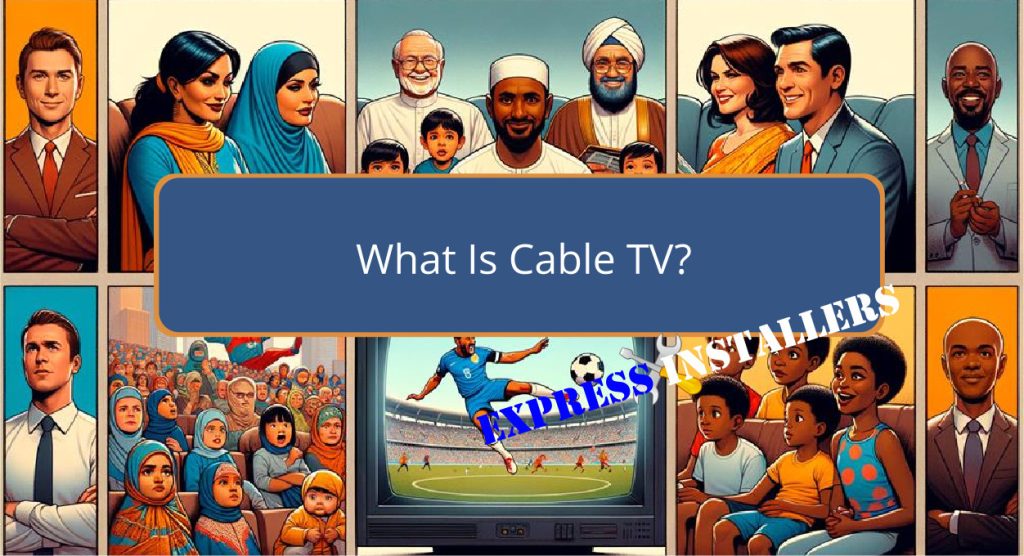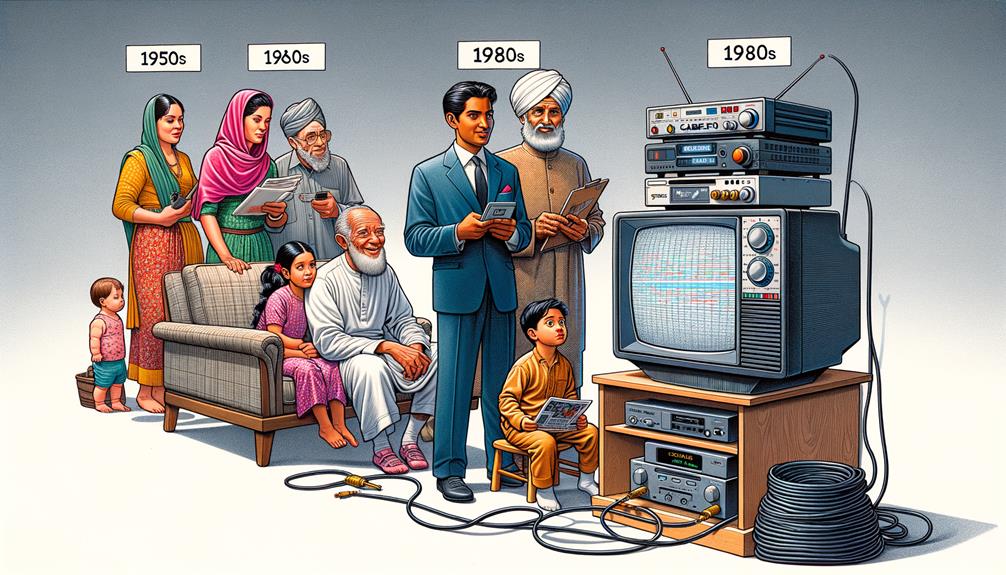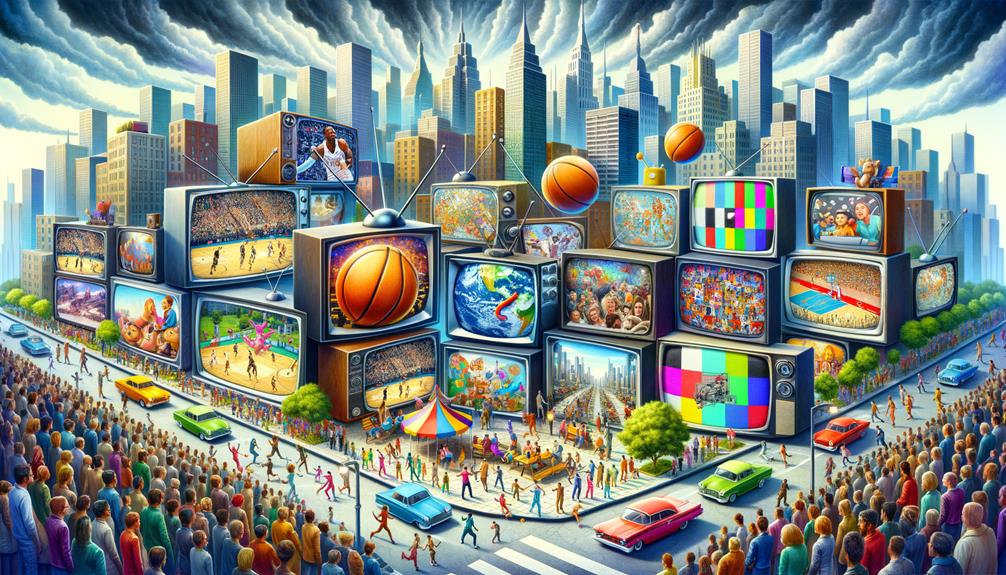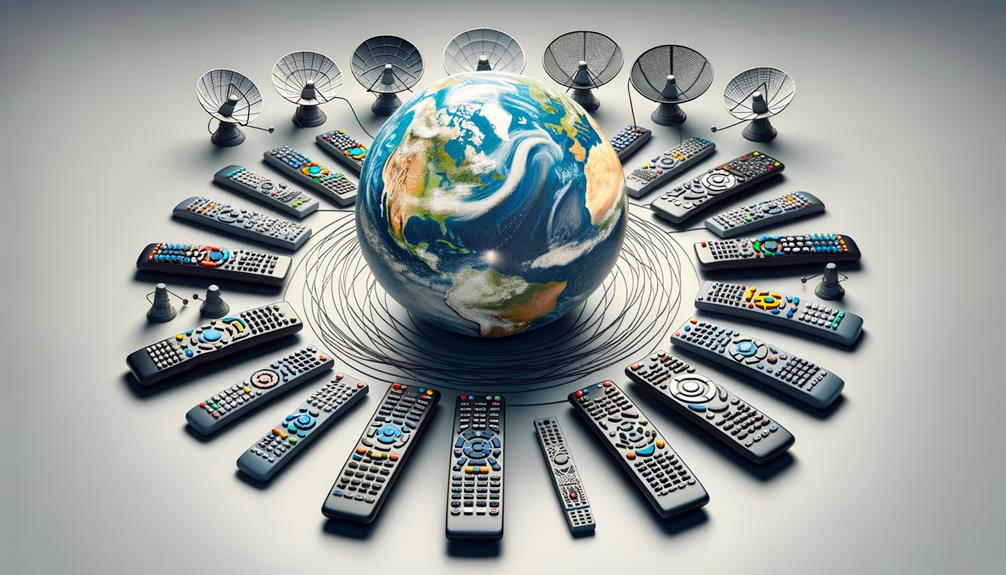
Cable TV is a system of delivering television programming through coaxial or fibre-optic cables directly to subscribers’ residences.
It uses a combination of coaxial cables, hybrid fiber-coaxial networks, and DOCSIS technology to provide both television and internet services.
Unlike satellite TV, cable TV offers more stable signal reception and is less affected by adverse weather conditions.
It requires a subscription and typically includes a variety of channels, from local to premium networks, catering to a broad spectrum of interests.
Established initially to improve reception in remote areas, cable TV has evolved to offer a dependable utility optimised for different demographic needs, enhancing the viewer’s experience in unique ways.
Quick Summary
- Cable TV delivers television programming through coaxial or fiber-optic cables.
- It offers a broad variety of channels including local, premium, and niche networks.
- Cable TV requires a subscription and often involves usage of a set-top box for access.
- It is known for more stable signal delivery, less affected by weather compared to satellite TV.
- The technology includes hybrid fiber-coaxial networks enhancing broadcast quality and reach.
Definition and Overview
Cable TV, established as a system in 1948 in Pennsylvania, delivers television content to subscribers through an intricate network of coaxial cables.
Contrasting with the burgeoning streaming platforms, cable TV retains a unique market position due to its regional availability and extensive channel selections.
Subscription costs, often a point of debate, can be higher for cable compared to streaming services; however, cable offers stability in service and pricing, factors which contribute to varying degrees of customer satisfaction.
The localised nature of cable systems guarantees service even in areas where internet-based streaming is unreliable or unavailable, fostering higher satisfaction among customers in less urbanised regions.
This geographical factor solidifies cable TV’s relevance in the broader broadcast spectrum.
Technology and Infrastructure
Delving into the technical underpinnings, cable TV utilises coaxial cables coupled with advanced hybrid fiber-coaxial (HFC) technology to guarantee a robust and high-quality signal transmission.
This system integrates the strength of fiber optics to enhance signal clarity and reach, especially over long distances.
The fiber optics component in the HFC network greatly boosts bandwidth capabilities, allowing for the encrypted digital signal transmission that necessitates set-top boxes for decryption and access.
Additionally, the infrastructure supports upstream data transmission, enabling interactive services and internet access via DOCSIS technology.
This sophisticated integration not only enhances user experience through improved service quality but also expands the functionality beyond traditional television viewing, catering to modern digital communication needs.
Historical Development

Exploring the roots of cable television, its inception dates back to 1948 when the first system was established in Pennsylvania to enhance TV reception in geographically challenging areas.
This early innovation marked the beginning of substantial market expansion as cable systems were deployed primarily in regions lacking local TV stations.
Cable TV Vs. Satellite TV
Comparing the differences between cable TV and satellite TV reveals distinct variations in delivery methods, signal reliability, and geographic accessibility.
Cable TV, transmitted through coaxial or fibre-optic cables, generally provides a more stable signal compared to satellite TV, particularly during adverse weather conditions.
This higher signal reliability stems from its less susceptibility to weather disruptions such as heavy rain or snow, which can have a notable impact on satellite signals.
Conversely, satellite TV excels in coverage area, offering services in remote or rural locations far beyond the reach of physical cable networks.
This remote accessibility makes it an essential option for viewers without access to the infrastructure required for cable TV, though it may require adjustments to avoid obstructions like buildings or trees that block the signal.
Content and Channel Variety

Cable TV provides an extensive array of channels and content, catering to a diverse range of interests and preferences.
The depth and breadth of programming available reflect strategic content licensing and meticulous programming schedules, ensuring continual engagement across various viewer demographics.
- Channel Selection: Cable offers everything from local broadcast stations to premium channels like HBO and niche networks such as ESPN, addressing the varied tastes of its audience.
- Viewer Demographics: Programming is tailored to cater to different age groups, interests, and cultural backgrounds.
- Content Licensing: Agreements with content creators allow cable providers to offer a mix of original programming, movies, and TV shows.
- Programming Schedules: Carefully planned to provide 24-hour content, maximising convenience and viewer retention.
Additional Services Offered
Moreover, extensive broadcasting, cable TV providers enhance their offerings with a range of supplementary services, including high-speed internet access and digital phone capabilities through the same coaxial cable infrastructure.
These enhancements not only diversify their portfolio but also increase user retention by creating an integrated, multi-service platform.
Subscribers gain the convenience of accessing on-demand content, pay-per-view options, and interactive features that enrich the viewing experience.
Interactive features particularly stand out by allowing users to engage with content more deeply through public-opinion polls and access to supplementary materials such as concert schedules.
Additionally, cable services extend to continuous updates on weather, stocks, and local community programming, ensuring that subscribers receive a comprehensive service that goes beyond mere entertainment.
Global Cable TV Trends

As the scope of cable TV services broadens, its global influence becomes evident across various continents, including North America, Europe, Australia, Asia, and South America.
Regional Adoption: Cable TV’s expansion is intertwined with the adoption of broadband and telephony services, enhancing its value proposition in competitive markets.
Regulatory Challenges: Different continents face varying regulatory landscapes which impact the deployment and operation of cable services, often dictating market dynamics.
Technological Integration: The fusion of internet and telephony with traditional cable TV services has transformed the industry, making it a holistic solution for entertainment and communication.
Economic Factors: Economic disparities influence cable TV’s market penetration, especially in regions like Africa where affordability affects widespread adoption.
Future of Cable Television
The evolution of cable television is rapidly embracing technologies that personalise and enhance viewer interaction.
Leveraging AI and machine learning, providers are now able to offer personalised recommendations that cater to individual tastes, increasing viewer satisfaction and retention.
This integration extends to interactive features that allow users to engage more deeply with content, transforming passive viewing into an interactive experience.
Additionally, cable companies are forming strategic streaming partnerships, enabling them to bundle traditional offerings with on-demand services, broadening their market appeal.
The deployment of 5G technology is expected to further enhance these capabilities, facilitating seamless content delivery across devices and incorporating cutting-edge virtual and augmented reality elements into the viewer’s experience, potentially revolutionising the cable TV landscape.
Frequently Asked Questions
What Is Cable TV in the UK?
In the UK, cable TV encompasses a subscription-based service delivered through coaxial or fiber-optic cables by key providers like Virgin Media, featuring diverse programming, high-definition options, and additional services such as broadband and telephony.
What Is the Difference Between Cable TV and Regular TV?
The difference between cable TV and regular TV lies in the signal source and subscription model. Cable TV uses dedicated cables, offering broader content and features on a subscription basis, unlike free broadcast TV that requires an aerial.
What Exactly Is Cable TV?
Cable TV refers to a system where television content is delivered via coaxial cables, employing specific transmission methods. It operates on subscription models, providing diverse programming to consumers for a monthly fee.
Is a Smart TV a Cable TV?
A Smart TV is not a Cable TV; it incorporates advanced features and connectivity options, allowing streaming via internet rather than relying solely on traditional cable channels provided through a physical cable connection.
Conclusion
Cable television, initially developed to enhance signal reception in remote areas, has evolved into a complex, global industry.
Despite facing competition from digital streaming platforms and satellite services, cable TV persists due to its varied content offerings, bundled services, and technological advancements.
As the industry adapts to incorporate more digital and on-demand services, the future of cable TV will likely hinge on its ability to integrate with emerging technologies and cater to changing consumer preferences.
